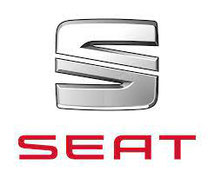SEAT Car PDF Manuals
SEAT Cars History
There're 10 SEAT car owner's & workshop service manuals PDF, electric wiring diagrams, error codes DTC.
In 1919, FIAT established its factory in Spain, the cars that were assembled there were called FIAT-Hispanias.
In 1949, the Spanish state financial group INI took control of the company, which was now called SEAT.
SEAT - Sociedad Espanola de Automoviles de Turismo S. A. - was founded in 1950.
The founders were the National Institute of Industry (NIP) - 51%, six banks - 42%, as well as FIAT, which has 7% and its own production license.
Until 1956, the SEAT-1400 was produced, which was at that time the most popular car, and in 1957 the rear-engined SEAT-600 was already introduced.
The sports history of the SEAT company began in 1970, and a little later, the Department of Special Vehicles was organized at the plant, which eventually grew into the current SEAT Sport department.
Since 1972, Spanish racers have repeatedly competed in national and European rally championships.
In 1979, FIAT acquired a controlling stake in SEAT, but less than a year and a half later, the company, in financial difficulties, abandoned its Spanish subsidiary.
In an effort to prevent the dismissal of 32, 000 workers, the Spanish government, through the INI group, acquired a 90% stake in the company.
In 1982, industrial and commercial cooperation agreements are signed with Volkswagen.
Since 1982, the production of an inexpensive SEAT Marbella car has begun.
1986 VAG (Volkswagen-Audi) acquired a 51% stake in SEAT. By the end of the year, its share increased to 75%, in the same year an agreement was signed with Volkswagen to assemble Polo, Passat and Santana series cars.
In 1990, Volkswagen acquires a 99. 99% stake in SEAT.
in 1991, a five-door SEAT Toledo appeared, with engines of 1595-1984 cm3 with a capacity of up to 150 hp.
In 1993, the Martorel plant produced only two SEAT models, and with the same base.
Five years later, Martorel produces eight different models.
In addition to the production of SEAT cars, several Volkswagen models are produced in Martorel, such as the Polo Classic, Polo Variant and Caddy.
In 1998, the plant was modernized by Volkswagen specialists.
The SEAT Alhambra front-wheel drive minivan, a joint development between Volkswagen and Ford, was first introduced in Frankfurt in the fall of 1995 and has been in production since 1996.
Since 1998, the car has been equipped with a 1. 8/20V-Turbo turbocharged engine.
Modernized in the summer of 2000.
SEAT Leon Cupra - the most powerful car of the company, is equipped with a 2. 8 liter V6 24V 204 hp engine. With. and all-wheel drive.
2001 - SEAT produces 11 million vehicles.



